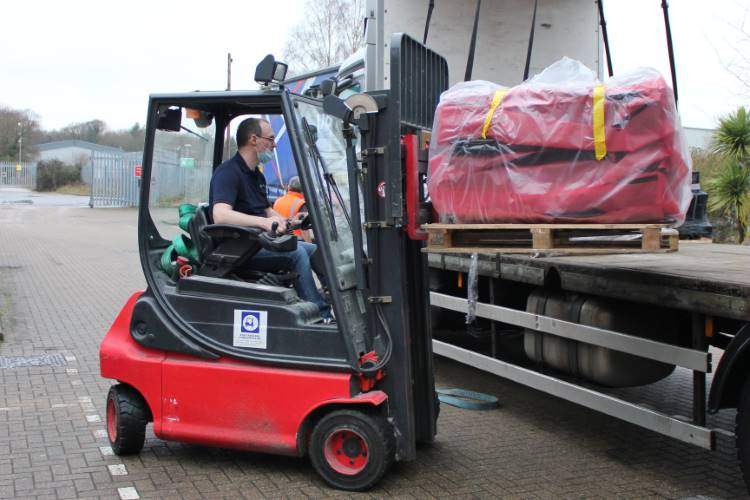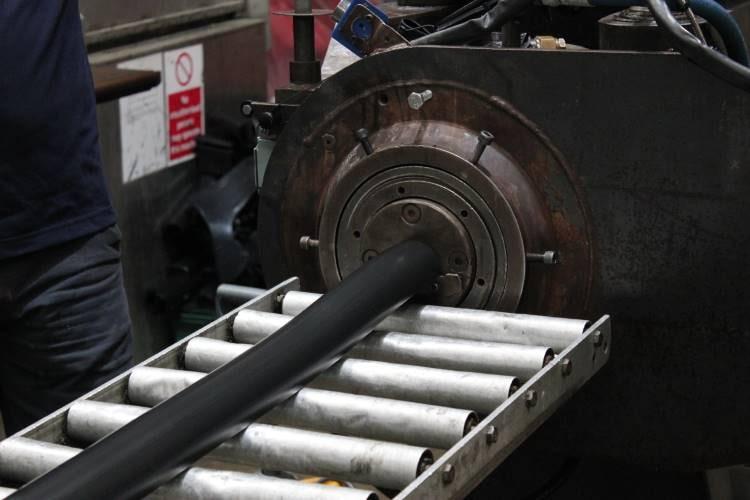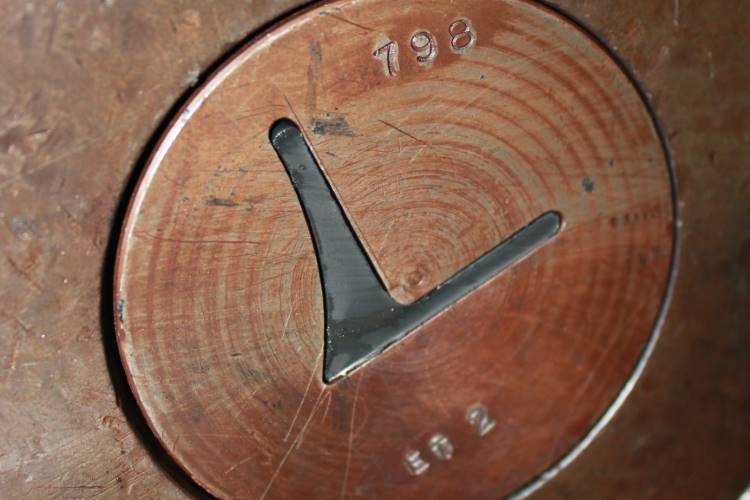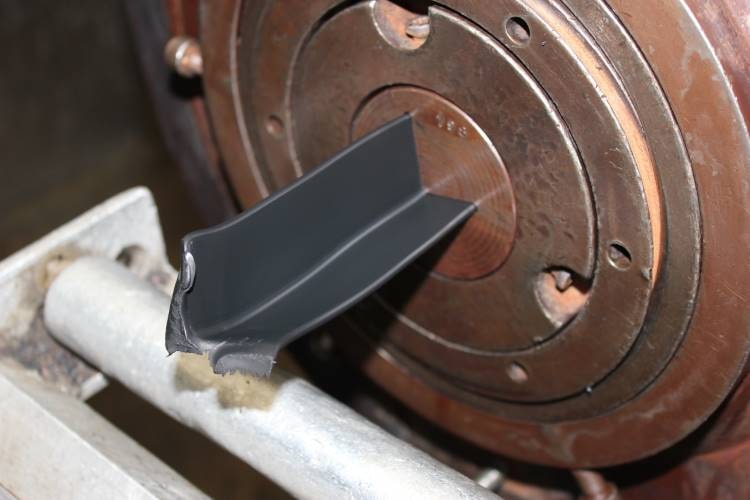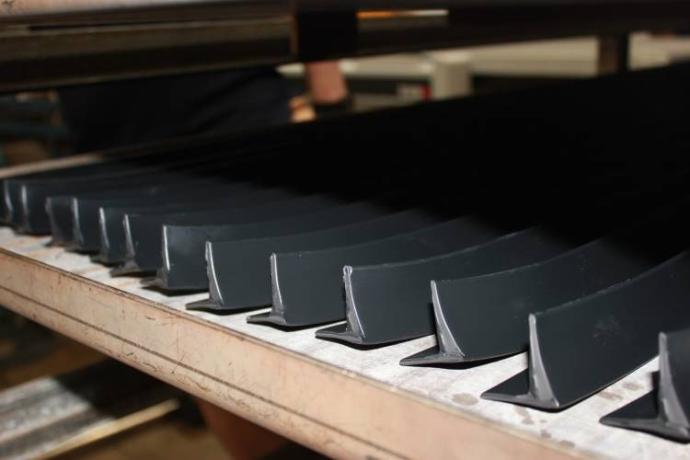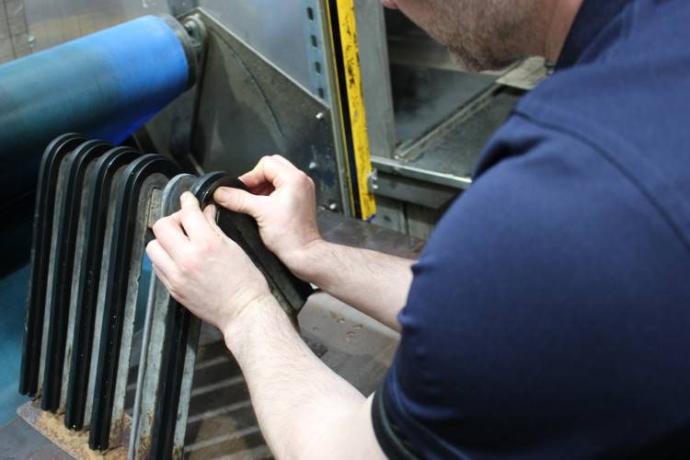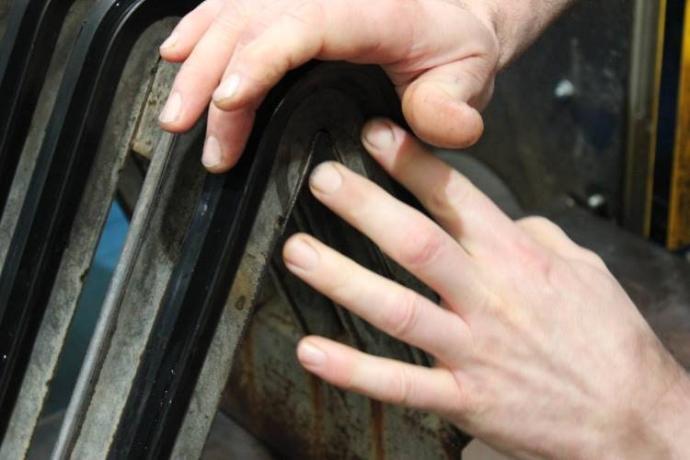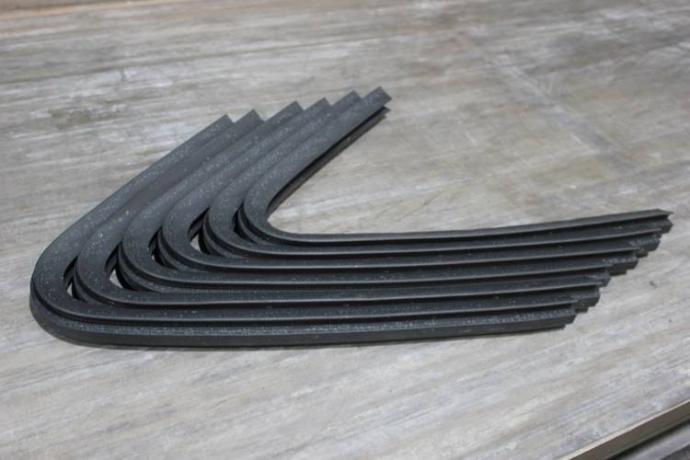How does the rubber extrusion process work?
Rubber materials in unvulcanised form are supplied to us by our UK-based compounder.
Our customers predominantly order extrusions in EPDM. EPDM is a highly stable and durable synthetic rubber which suits a variety of applications, however, we also supply extrusions made from other rubbers such as Neoprene, Nitrile, Natural and Silicone. To find out more on which material is best fit for your application please see our blog: A Buyer's Guide To Rubber.
The unvulcanised rubber is then heated up and fed into our extruder. Interchangeable dies on the face of the extruder, unique to each profile and material, determine the shape of the extrusion profile as the heated rubber is forced through the die by the extruder.
By controlling the temperature, pressure and speed of the extrusion process, rubber flowing through the die swells to form the desired shape. The emerging extrusion can either be cut into discrete lengths or coiled as it flows out of the extruder. In some instances, the profiles are run through lubricant to prevent the un-cured rubber from sticking to itself.
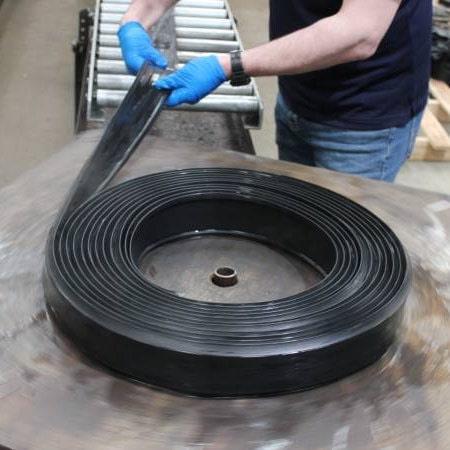
How are rubber extrusions vulcanised?
Once extruded, the lengths or coils are usually loaded into an Autoclave for curing. The Autoclave is a large pressure vessel which is heated using steam. The batch curing process requires both high pressure and heat to straighten up the hydrocarbon chains in an irreversible chemical reaction, causing the material to strengthen and stabilise. During this process, the rubber will either expand or shrink its length and cross section depending on the compound used. In some instances, our customers require extrusions to be formed into specific shapes and to achieve the desired shape, these extrusions are supported by formers in the autoclave while they are cured.
Once the extrusions have been cured in the Autoclave, they are cooled, inspected and prepared for shipment.
Walker Rubber have over 2,000 Extruded Profiles to choose from and can make new designs in as little as 10 days. Take a look at our range of extrusions.
Common rubber extruded products include:
Angle Extrusions
T Profile Extrusions
P Profile Extrusions
Tadpole Extrusions
Marine Fenders
Tank Strap Extrusions
Container Door Seals
Brick Grabs
Weighbridge Seals
Lock Gate Seals
Cable Protector Extrusions
Wedge Profile Extrusions
Conveyor Side Skirts
Hatch Door Seals
In addition to simply extruding rubber, Walker Rubber can also supply them cut to size and/or ready drilled for easy installation.
If you have an extrusion enquiry that you feel we might be able to help you with, please contact our sales team.
